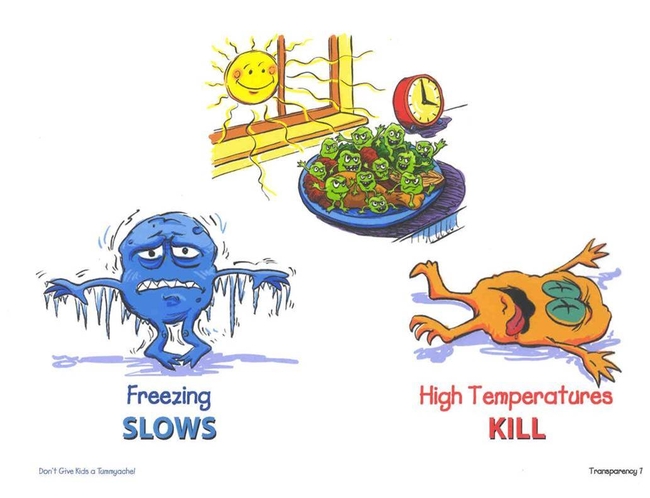Five ways NOT to poison friends and family during the holidays

You may be thinking, “My family has eaten food that has been sitting on the table longer than two hours and survived.” Consider yourself lucky.
“We keep learning more about foodborne illness,” says Patti Wooten Swanson, UC Cooperative Extension nutrition advisor in San Diego County. “We probably did get sick, but we thought it was something else, like the 24-hour flu.”
She added that kids, diabetics, pregnant women, older adults and people with weakened immune systems are more susceptible to foodborne illnesses.
For the holidays and all year long, Wooten Swanson offers these food safety tips:
- Thaw turkey or meat in the refrigerator.
- Don't wash raw meat or poultry in the sink before cooking.
- Use a meat thermometer to determine when meat or poultry is done.
- Put leftovers in the refrigerator within two hours.
- On the fourth day, throw leftovers away.

“Bacteria grow very rapidly,” she said. “From 40 degrees to 140 degrees is what we call the danger zone. We encourage you to get food out of that temperature range as soon as possible. Don't let food sit on the table after you finish eating and go to watch TV.”
While you're watching football, she also recommends not leaving food out the length of a game.
“Chips are fine to leave out,” Wooten Swanson said, “But put the salsa and guacamole in small containers, then put out new bowls at halftime. Take away the original containers to wash or discard.You don't want to refill a bowl that has been out for 2 hours.”

“We put an emphasis on hand washing because it can prevent cross-contamination, which helps prevent foodborne illness and can keep us healthy during the flu season,” said Connie Schneider, director of the UC Youth, Families and Communities Statewide Program.
She recommends rubbing your hands together with soap and water for 20 seconds to thoroughly clean them.
The UC Expanded Food and Nutrition Education Program (EFNEP) teaches hand washing as a food safety practice in its nutrition classes for adults and children. After taking the class in San Diego County, 72 percent of the 340 participating adults improved their safe food-handling practices and 55 percent of 1,231 children improved, said Wooten Swanson, who oversees the nutrition and food safety education program.
For more food safety resources, visit UC Cooperative Extension's "Food Safety for the Holidays" website http://ucanr.edu/HolidayFoodSafety and Nebraska and Iowa State Cooperative Extension's food safety website at http://www.4daythrowaway.org. For USDA recommended temperatures for cooking meat, visit http://blogs.usda.gov/2011/05/25/cooking-meat-check-the-new-recommended-temperatures.